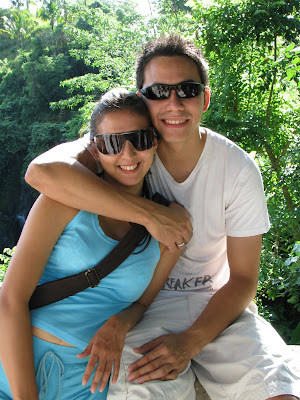Bekerja ternyata tidak selalu harus berkantor, yang dalam pengertian konservatif adalah sebuah gedung atau ruang, di mana segala aktivitas bisnis dilakukan. Profesional zaman kiwari bisa mengerjakan tugasnya di mana pun, di kafe atau mal yang menjadi meeting points baru. Bagi mobile workers, bertemu klien, bernegosiasi, bahkan berhubungan dengan klien di seluruh dunia pun, bisa dilakukan di kedai kopi. Aha, bisnis dan kesenangan bahkan bisa dilakukan dalam waktu yang bersamaan. (Burhan Abe)
Sambil menyeruput secangkir kopi, mata Evi Puspa tertuju pada layar laptopnya. Pagi itu ia harus mengirim sebuah proposal ke klien, ia membaca sejenak materi yang akan dikirim, memeriksa kembali alamat yang dituju, dan klik! Dalam bilangan detik, proposal tersebut sudah sent out ke email klien.
Direktur PT Online Marketing Indonesia itu tidak melakukannya di kantor, tapi dari Wien Cafe di Plaza Senayan Jakarta. Dari rumah ia tidak perlu meluncur ke kantornya yang masih berada di bilangan segi tiga emas Jakarta, karena siangnya ia janji bertemu dengan klien yang lain di plaza tersebut.
“Tidak hanya hari ini, sebagian besar waktu saya berada di jalanan. Dengan laptop dan koneksi internet, serta ponsel, saya bisa mengendalikan perusahaan dari mana pun,” ujar Evi.
Begitulah, kemajuan teknologi informasi membuat segalanya menjadi mudah. Dengan fasilitas internet wi-fi ini Evi bisa melakukan kontak bisnis dengan mitranya secara online. Dengan tidak dibatasi oleh tempat, asal terdapat fasilitas hot spot, semua pekerjaan bisa dilakukan dengan mudah, mulai dari melobi sampai melakukan presentasi, termasuk menggunakan fasilitas email dan chatting, tentu saja. “Transfer dana pun bisa memanfaatkan fasilitas internet banking,” ujar mantan marketing manager detikcom itu.
Jadi, kalau semuanya bisa dilakukan di mana pun, kenapa juga harus berkantor setiap hari. Pemilik pemilik situs perempuan.com itu justru mengangap bahwa kafe adalah tempat yang nyaman untuk bersantai sekaligus bekerja yang efektif. Kafe yang disebut pada ilustrasi di atas tersebut tidak hanya sebagai meeting point, tapi juga menjadi kantor kedua.
Tidak hanya Evi, banyak orang menjalani hidup sebagai mobile worker. Memang tidak semua bagian bisa melakukannya, yang kehadirannya masih dibutuhkan di kantor konvensional, seperti operator, sekretaris, dan clerical staff lainnya.
Yang paling banyak berkantor di jalanan biasanya orang marketing, konsultan manajemen, wartawan, penulis, dan yang berhubungan dengan pekerjaan kreatif. Dan tentu saja, para entrepreneur yang mengelola perusahaannya sendiri.
Pengamat pemasaran Rhenald Kasali, meski berkantor resmi di Program Pasca Sarjana, Fakultas Ekonmo, UI, Depok, boleh dibilang sebagai mobile worker. Banyak aktivitas yang dilakukan dilakukan di luar kantor, mulai dari konsultansi, ceramah, dan lain-lain. Bahkan untuk bertemu klien ia tidak sampai hati memaksa mereka datang ke Depok, tapi dijamu di Financial Club, Graha Niaga Jakarta, di mana ia menjadi salah seorang anggota kehormatannya.
Hendra adalah contoh yang lebih ekstrim. Profesional di bidang valas dan pasar modal ini bahkan melakukan hamori semua pekerjaannya dari kafe ke kafe. Pria 32 tahun ini kerap nongkrong di Starbucks yang saat ini hadir di banyak tempat. Dengan notebook dan PDA-nya, ia bebas berselancar di internet sambil memantau pergerakan indeks valas dan harga saham. Di kedai kopi dengan fasilitas internet nirkabel atau zona hot spot, ia pun bisa melakukan deal-deal bisnis dengan klien.
Bisa terbayang, kegiatan para mobile worker ini kini lebih tertolong dengan kehadiran teknologi baru telepon seluler yang disebut sebagai 3G – atau generasi ketiga, bahkan 3,5G. Sebuah ilustrasi di Jepang mungkin bisa menggambarkan kedigdsyaan teknologi ini, yang di sana hadir melalui teknologi WCDMA.















